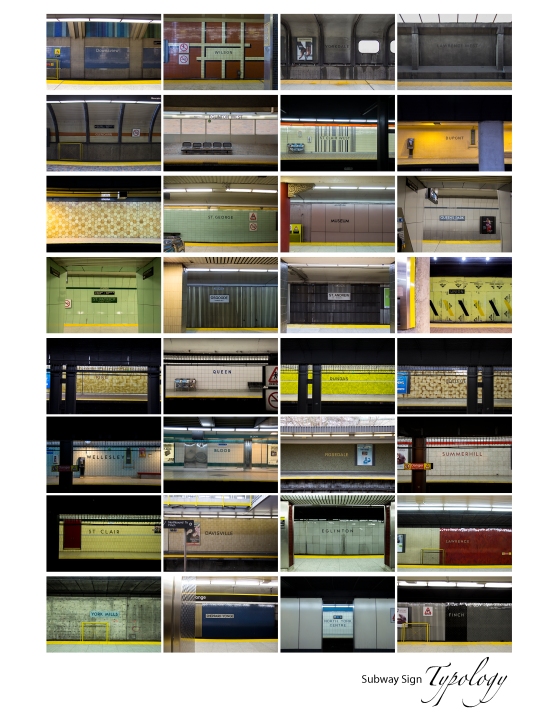The Yonge-University-Spadina line first opened in 1954, with extensions in 1963, 1973, 1974 ,1978 and 1996. It is the oldest and busiest subway line in Toronto with 32 stations and operated by the Toronto Transit Commission (TTC).
A Brief History:
1954: The Yonge line opened going from Union north to Eglington
1963: Segment continued north to St. George
1973: Extended to York Mills
1974: Extended to Finch
1978: Spadina segment was expanded north of the University line to Wilson
1987: North York Centre station was build on an existing section of the line
1996: Spadina segment was expanded to Downsview
Construction is currently on it’s way to further expand the Spadina line northwest of Downsview into the City of Vaughan. Subway service is expected to be running in August 2016.
That’s all great, right? But now you’re probably wondering why I chose to do my typology on this subway line. To explain that it would help to know a little bit about me. For those unaware I’m a student at Ryerson University, which can be found in the heart of downtown Toronto. I however, live north of Toronto where the subway doesn’t quite reach, making me a commuter who has to ride the subway to and from school everyday. It doesn’t matter which end I start on, Downsview or Finch because either way I still live north of where the subway ends. I’m in the middle of each. As mentioned before I ride the Yonge-University-Spadina line everyday but never quite paid attention to the stations I passed on the way to my destination. I became intrigued and wanted to see the difference between each and every station. So one Sunday, with my brother I rode the full subway line starting at Downsview station. At each stop I’d get off, take a picture of the sign and wait anywhere from 4-10 minutes for the next train to come along.
Throughout my experience I noticed various similarities and differences between some of the stations. Stations on the original line; Eglington, Davisville, St. Clair, Summerhill, Rosedale, Bloor, Wellesley, College, Dundas, Queen and King are all designed very similar using vitreous marble, the only difference being the colour of the tiles. Union, which was one of the original stations is currently being renovated. The newer stations have art and architecture that differs from the original line.
Other Torontonians who ride the subway may have never taken the time to get to know each and every station on the line but I didn’t want to be one of the many. The subway in a way has become my second home and by taking a photograph of all the station signs i’ve documented a day in the life of me.

